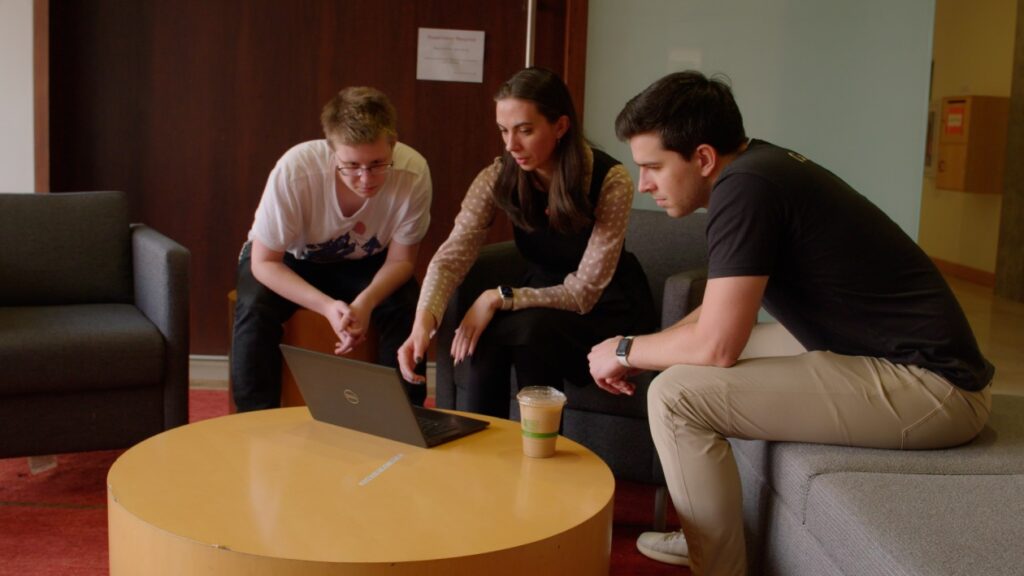Imagine if students could get relevant, real-world cybersecurity experience to help them stand out in the job market, right at their own school or university? For recent Auburn University grad George Cothren, getting on-the-job experience at a student Security Operations Center—or student SOC—during college made all the difference in launching his cybersecurity career.
Aligned with Microsoft’s mission to empower every person on the planet to achieve more, we’re thrilled to announce the Microsoft Student SOC initiative. This initiative includes the Microsoft Student SOC Toolkit and implementation guide as free resources, along with training and certification to assist leaders at high schools and universities in addressing the cybersecurity challenges faced in education.
The Microsoft Student SOC initiative aims to bridge the significant skills gap in the cybersecurity sector and education. These resources provide in-depth training on top-tier AI-powered security products such as Microsoft Security Copilot, Microsoft Defender XDR, Microsoft Sentinel, and more. These free resources and training can help educators, school staff, and students understand the importance of cybersecurity and how to defend against cyberthreats.
Bridging the cybersecurity skills gap
Two weeks after graduating with a computer science degree in 2024, Cothren started a position as a cybersecurity analyst at Regions Bank, a job he says his SOC experience “absolutely” helped him get. In the SOC, participants work alongside full-time cybersecurity employees on tasks like reviewing incident reports, hunting for cyberthreats, and investigating suspicious online behavior. Student SOC programs like Cothren’s can give students an edge in a competitive job market by providing them with valuable hands-on experience in cybersecurity before they enter the workforce.
Companies really don’t look for students fresh out of college, because cybersecurity is about protecting billion-dollar corporations—their data, their reputation, their integrity… I am very lucky for having had three years of experience.
George Cothren, Auburn University Graduate
Moreover, student SOCs help address a critical need in the job market. With more than 400,000 unfilled cybersecurity roles in the US alone, students can leave their programs well-prepared to combat a nationwide shortage.
Student SOCs provide opportunities for students and universities
Student SOCs are becoming increasingly popular nationwide, largely because of the need for an extra set of hands on security teams. Because institutions handle highly sensitive data and intellectual property, they’re prime targets for cyberthreats.
In fact, cyberattacks on universities are increasing, with a recent Microsoft report finding that the education sector is now the third-most targeted industry for cybercrime globally. While attacks are increasing, IT teams’ budgets remain constrained—making it difficult to combat threats effectively.
That’s where student SOCs can help. With a student SOC, educational institutions can strengthen their cybersecurity defenses while also offering students invaluable hands-on training that equips them with the skills to step confidently into the workforce.
Jay James, the senior cybersecurity operations lead at Auburn University, realized the power of student SOCs early on and established one at Auburn in 2019. “As a higher-ed institution, our number one priority is empowering students for whatever they plan on doing next,” he says. “It’s a win where the students have the opportunity to get hands-on experience and we’re able to utilize those students to help secure the university.”
Students in action
Student SOCs function as educational hubs and operational cybersecurity monitoring units. The centers are typically located on campus, with staffing arranged around student schedules, and participants use the same tools they’re likely to encounter in their careers.
Grace Parrish, a senior at Oregon State University (OSU), gained hands-on experience working with industry-standard automation tools to help the university more efficiently combat cyberattacks. “I like getting to put my hands on some nice enterprise-grade security solutions,” says Parrish. “And I really enjoy working on automation projects. They’re like little puzzles to me.”

Of course, students aren’t thrown into mission-critical tasks alone but rather work alongside full-time staff members for mentorship and oversight. With guidance, they learn to monitor, intercept, and solve real-time cyberattacks. If a serious threat occurs, students escalate it to professional staff while resolving lower-risk incidents independently. Sometimes, they even identify vulnerabilities that professionals might miss.
At the University of Tennessee, Knoxville, students uncovered “slow burn” issues, seemingly random low-priority incidents that when grouped together point to an emerging problem. According to Chief Technology Officer Matthew Williams, that type of analysis didn’t happen before employing students.
“We unfortunately just used to look at alerts in isolation because of staffing,” he says. “Now we have the resources to look at things at more of a high level and in aggregate that could point to issues that we have otherwise just not paid attention to.”
The Microsoft Student SOC initiative takes student SOCs a step further
In a Microsoft Student SOC, students and schools get access to resources like the Student SOC Toolkit and training tools—while learning industry-leading cybersecurity tools like Security Copilot. Security Copilot can lower the barrier to entry for students interested in joining a SOC by providing a plain language interface. Students can learn on the job while still being a productive member of the SOC team. But Security Copilot isn’t just for beginners. As students become more proficient in their role, Security Copilot grows with them, helping them take on more complex cybersecurity tasks.
[We] are all really excited about using Copilot… A lot of the academic curriculums at OSU, and seemingly everywhere, aren’t really including AI type tools yet, but it’s something that is so forefront to [student’s] careers.
Emily Longman, SOC Manager, Oregon State University
What’s more is that students are guided by a curriculum that helps learners deepen their cybersecurity knowledge while getting hands-on training. The program starts with a course on the foundations of security operations, with students getting an opportunity to earn the Microsoft Cybersecurity Analyst Professional Certificate once completed.
Then, they delve into the foundations of modern SOCs and focus on Threat Protection Engagement and Security AI. To apply their skills, they study core Microsoft security solutions and cloud security, which also prepares them to earn the MS Learn Applied Skills Badge: Configure SIEM (Security Information and Event Management) security operations using Microsoft Sentinel and the Microsoft Sentinel Training LinkedIn Learning Badge.
Gaining real-life experience
After earning the requisite badges, it’s time for hands-on labs with the Microsoft Security Unified SOC Platform and a gamified immersion experience featuring real-world security challenges. The program then culminates with an opportunity for participants to earn Microsoft Certifications like Security, Identity, and Compliance Fundamentals (SC-900) the Microsoft SOC Analyst Certification (SC-200). They can even obtain ACE (American Council on Education) college credit, helping them demonstrate their knowledge to future employers.
Longman notes that students feel their SOC experience is excellent preparation for the workforce. “They’re so glad they’re working with us because it’s such a good learning opportunity. It’s a really good compliment [sic] to the academics that they’re getting here. They’re really excited about… using tools like Microsoft Security Copilot. It’s definitely going to be something that will be used in industry and continue to grow throughout their careers.”
In addition to supporting a school’s core mission to prepare students for the future, the program benefits the institutions’ security posture. With training and certifications from Microsoft, high schools and universities can stay current with modern cyberthreats, ensuring their student SOC remains agile and responsive to an ever-evolving cyber landscape. They can also collaborate with experienced security partners specializing in student SOCs for expert guidance in setting up a SOC program that’s right for their institution, minimizing missed alerts, and providing an extra layer of security oversight.

Join us in shaping the future of cybersecurity
Reflecting on her experience, student Emily MacPherson is grateful she joined the student SOC at OSU. “I feel like I’m ahead compared to the average sophomore in college,” she says. “You should definitely do it.”
If you’re a university leader who’s interested in empowering the next generation of cybersecurity leaders, learn more about the Microsoft Student SOC initiative. Get started with the implementation guide and initial training paths by downloading them for free into your learning management system (LMS). Learn more about Microsoft Student SOC certifications by downloading the PDF. For additional information, you can also email Microsoft Student SOC support or contact your Microsoft Account Representative.
If you’re a student who’s interested in starting a student SOC at your school, share this blog with your university’s IT team and join the Microsoft Learn Student Ambassadors LinkedIn group.











